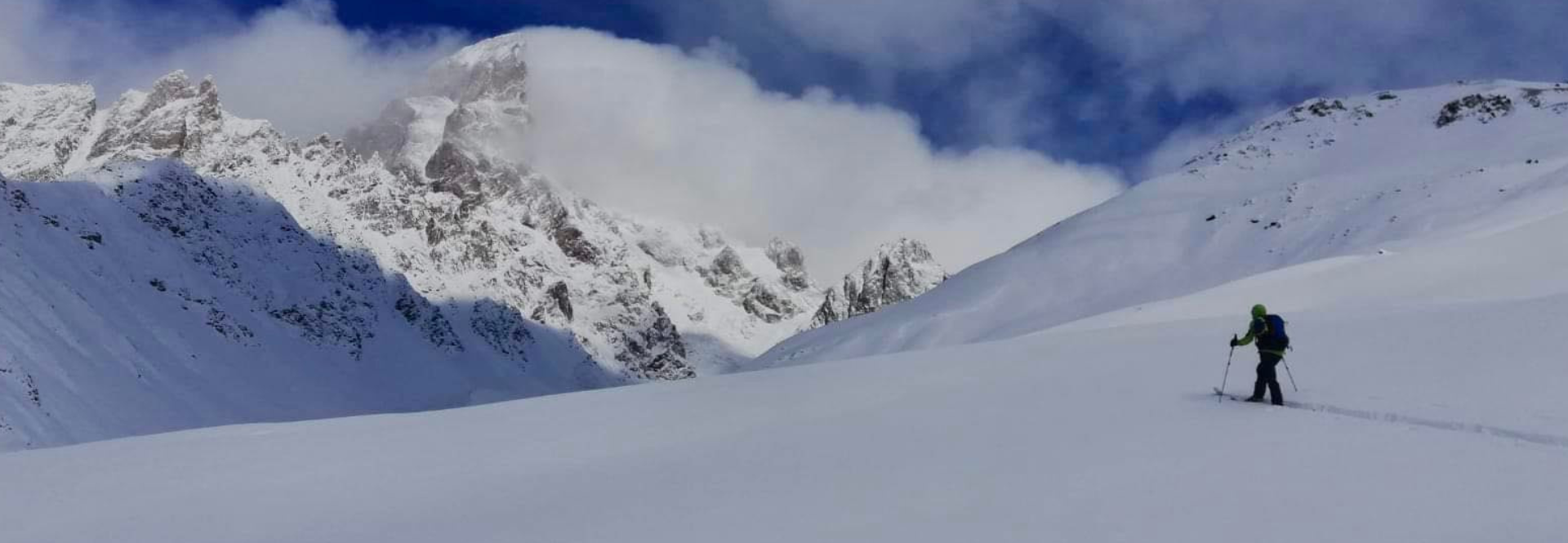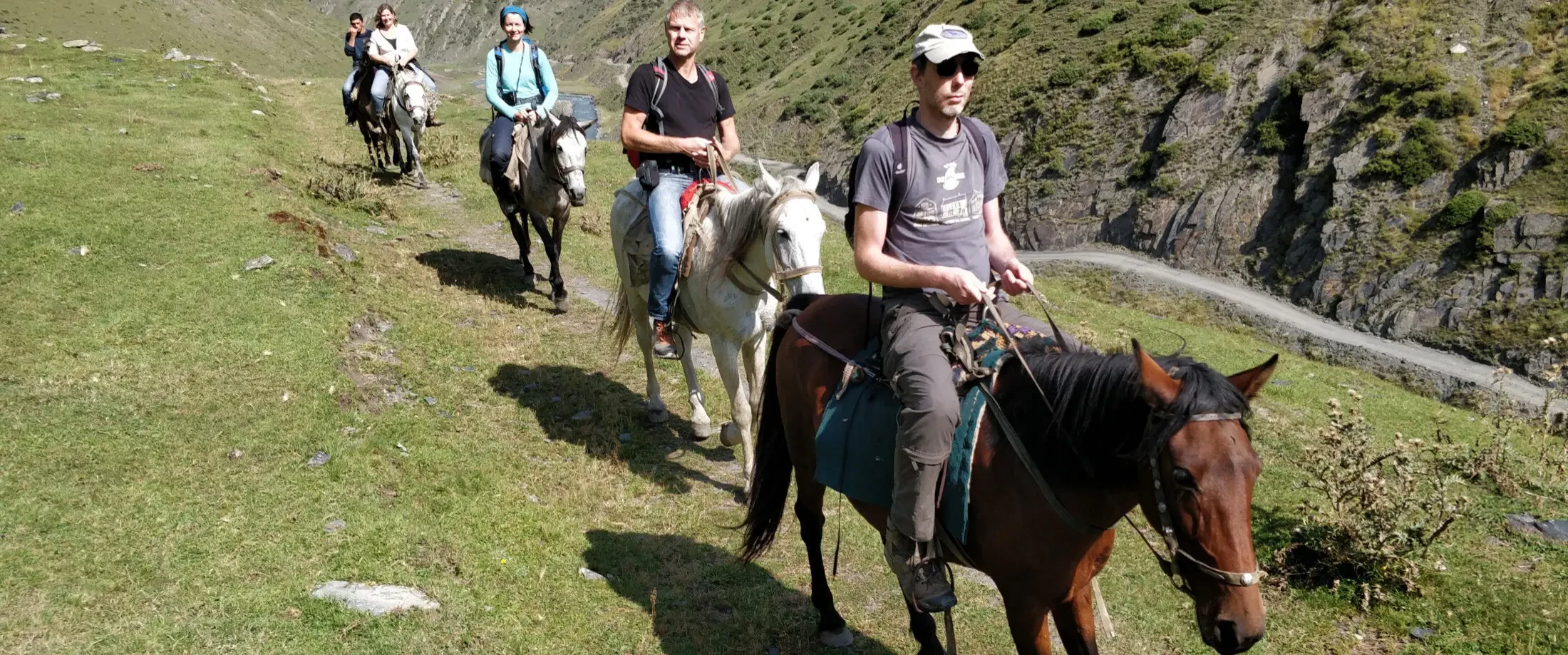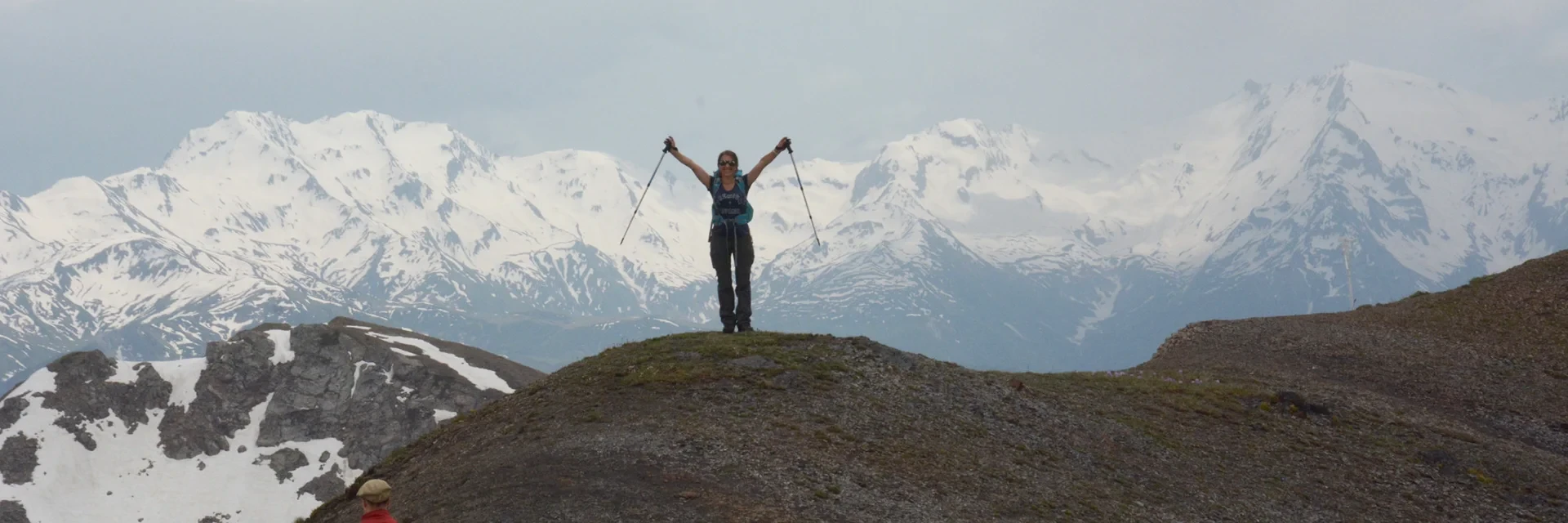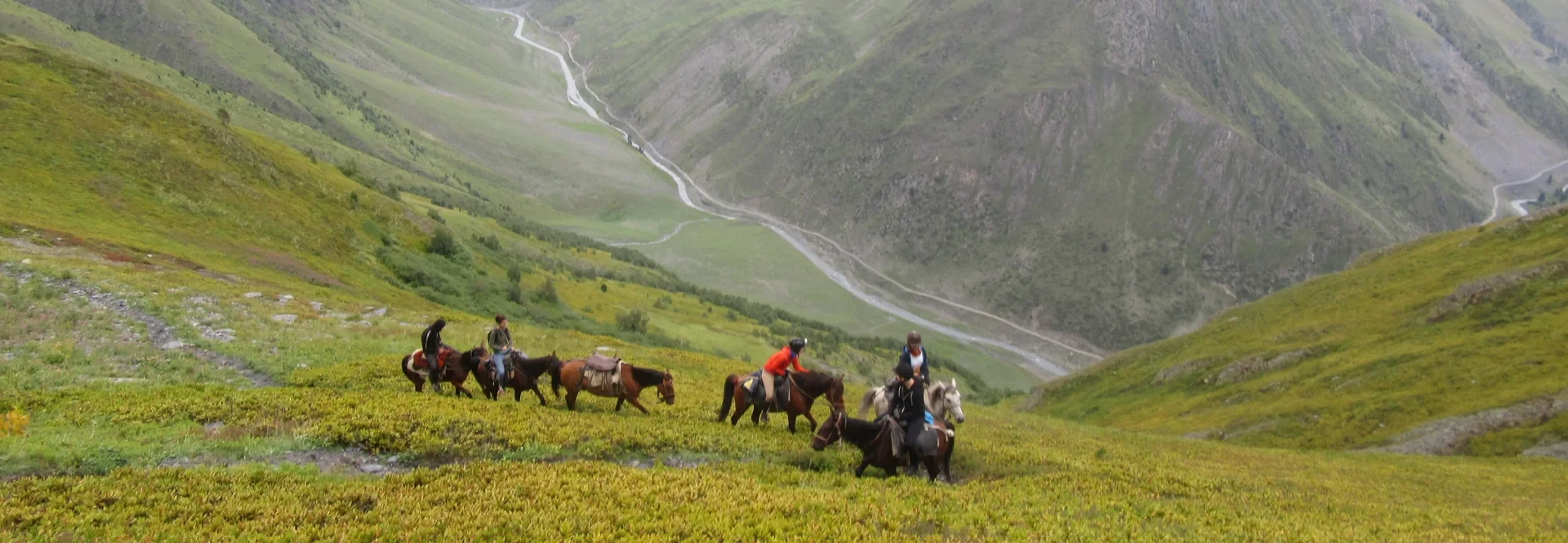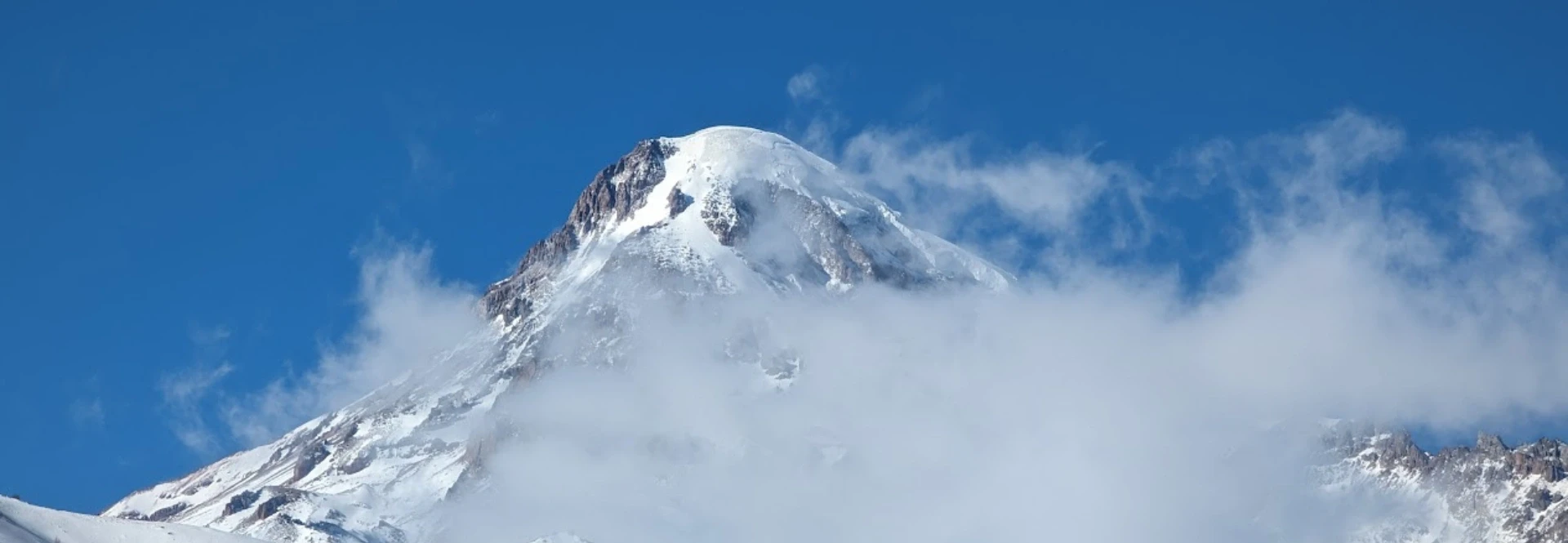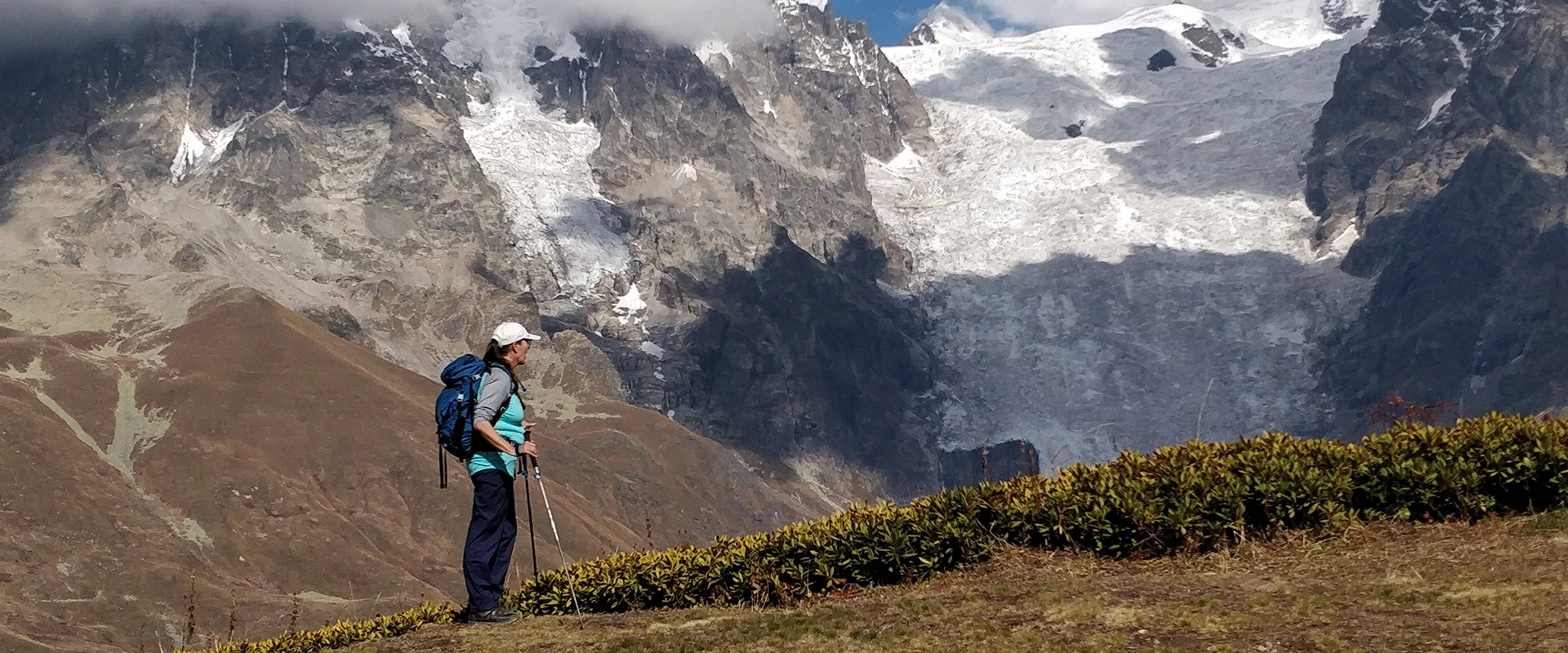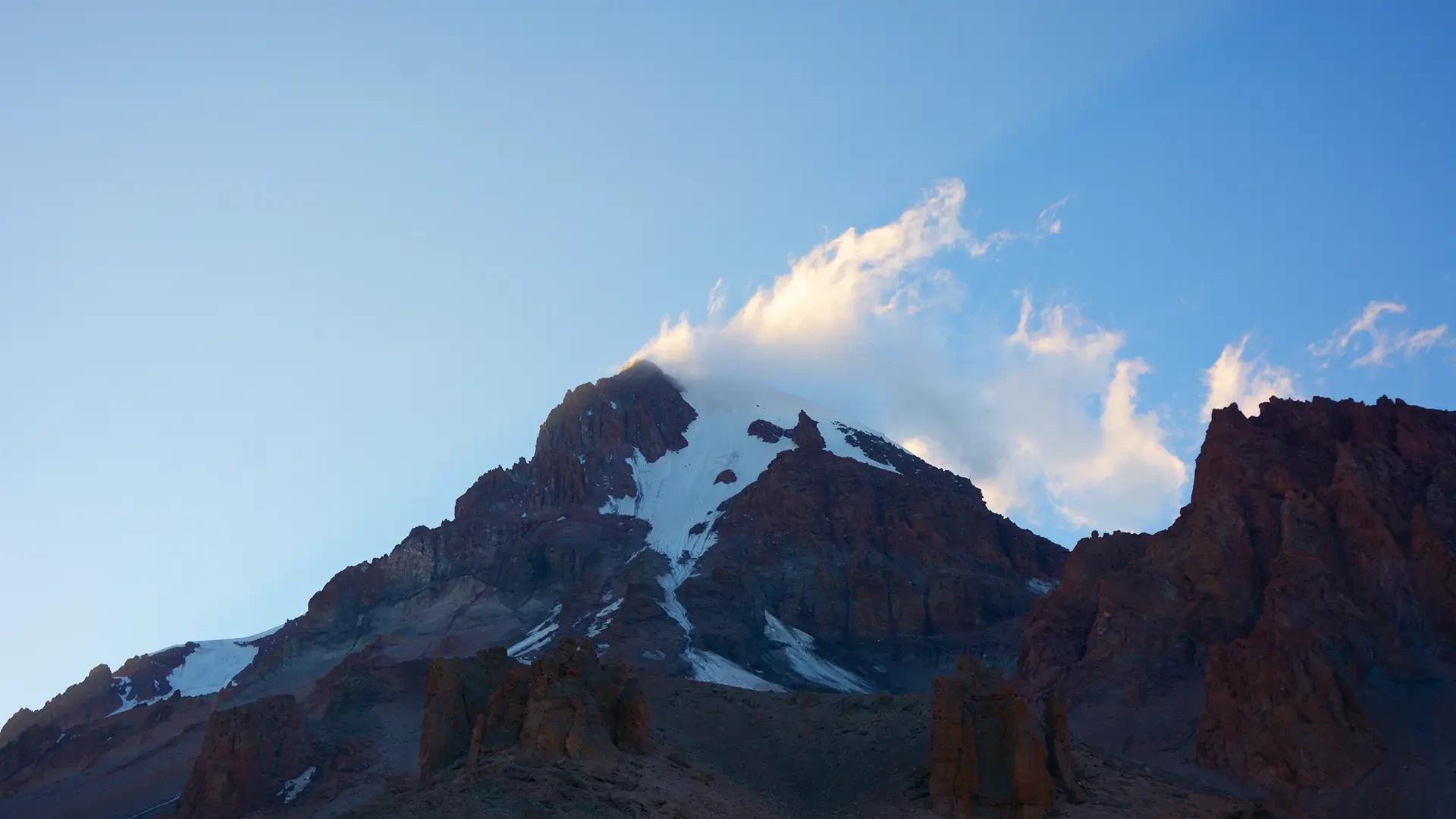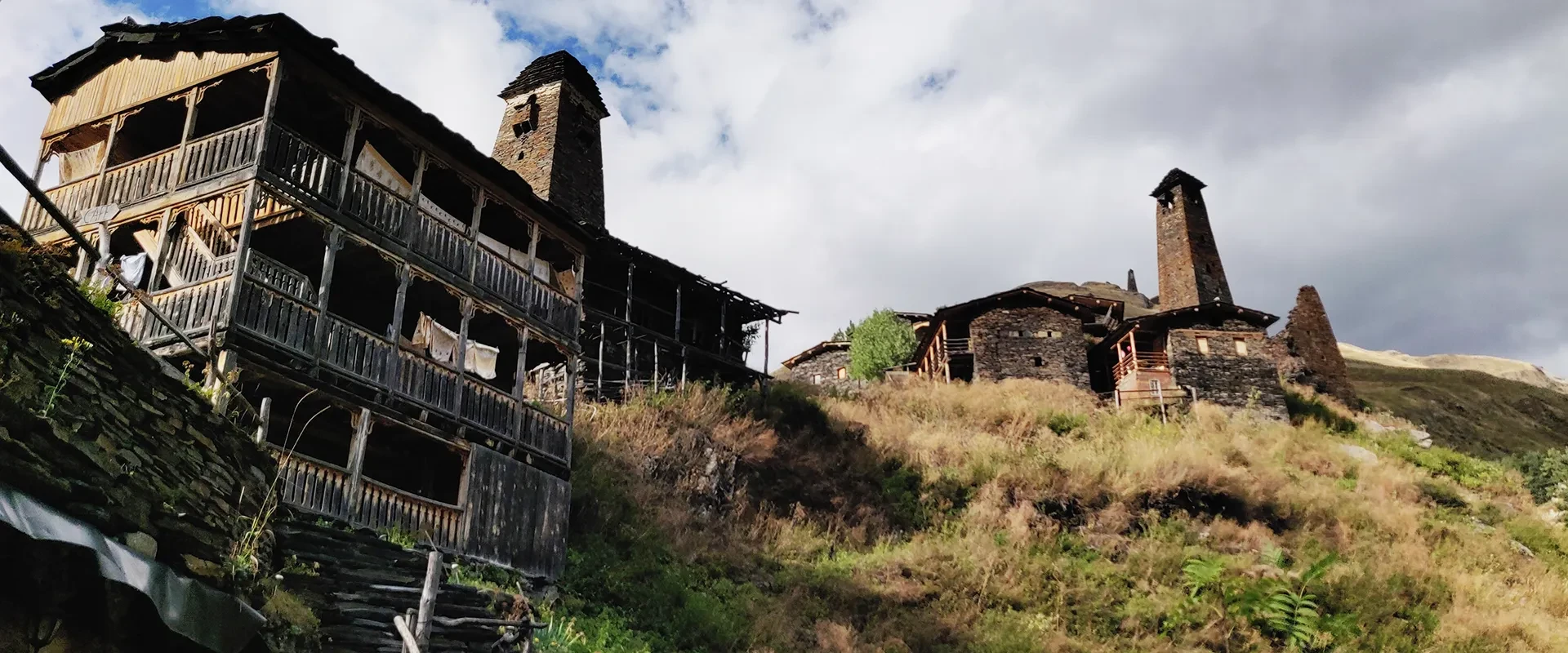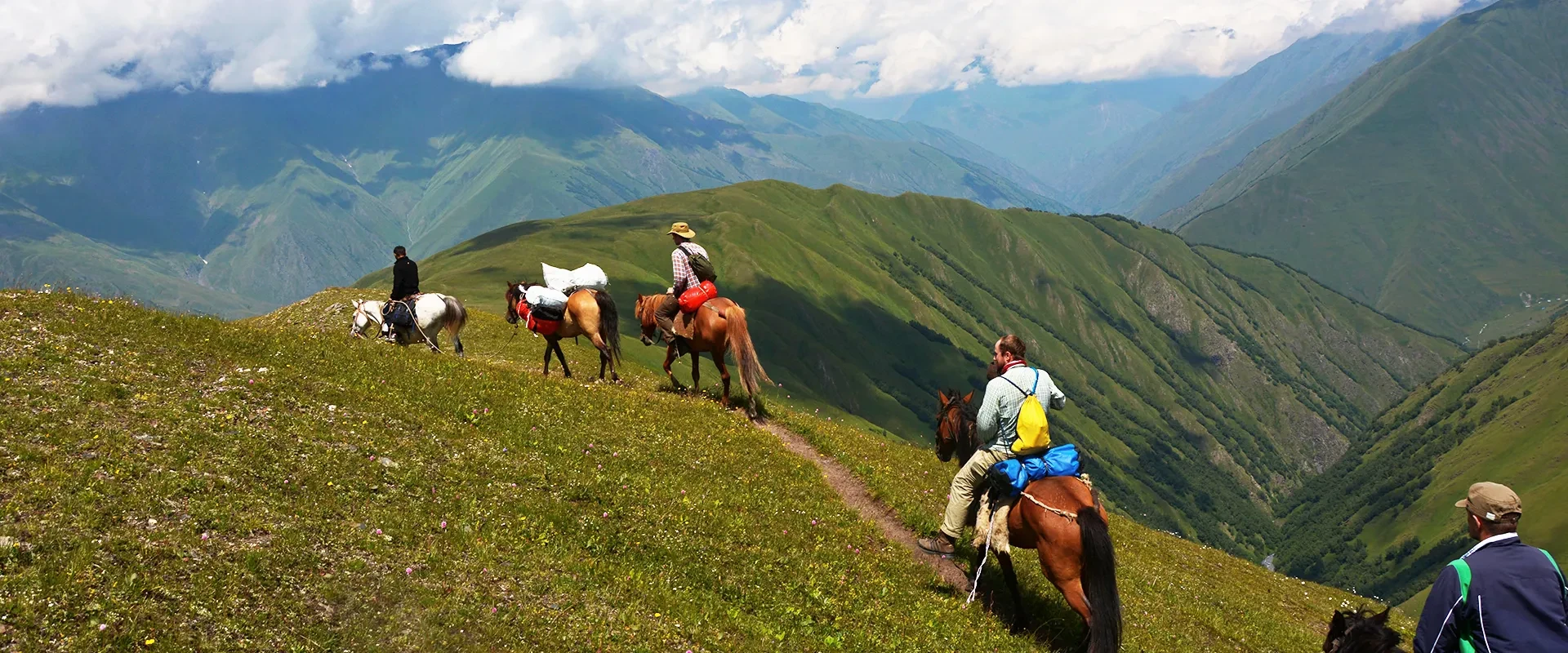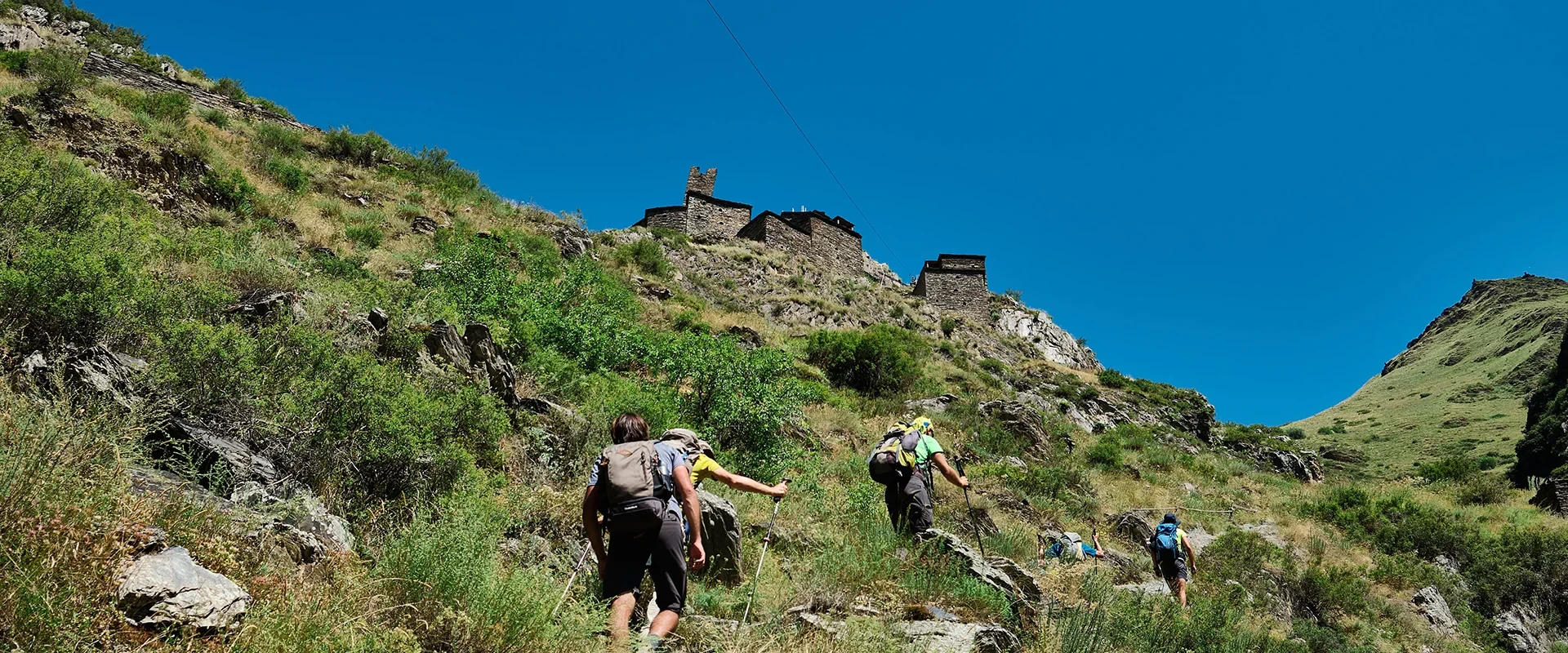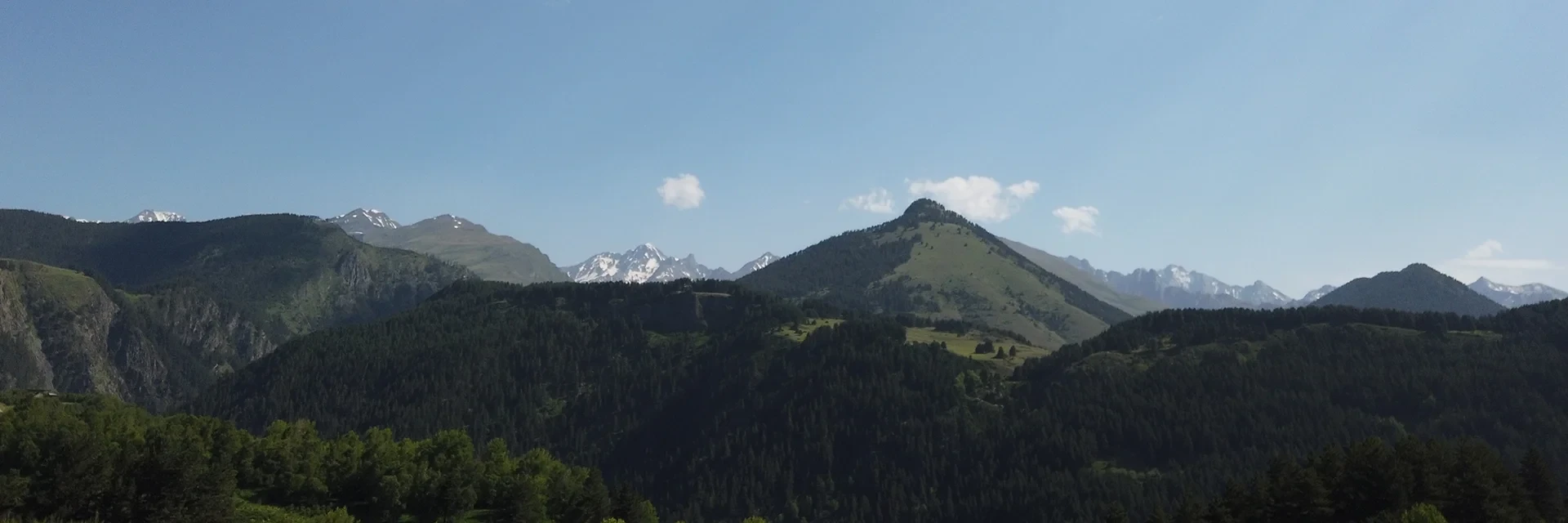A few years ago Georgia used to be a hidden treasure destination among ski tourers, but these days interest is on the rise. Word has spread about vast, quiet bowls, unique mountain culture, and guides know the slopes like the back of their hands, traversing them almost year-round.
The country offers a combination of a few important factors: approachable terrain for newcomers, serious lines for progress, and the support of experienced professionals who have in-depth knowledge of the routes and know how to support a group during the climbs.
If you’re interested in planning a ski touring Georgia trip, this guide will help you set your expectations right and even help choose, which of the main winter regions (Gudauri, Kazbegi, and Svaneti) you should visit, based on what you expect to get out of your trip.
What is Ski Touring?
Ski touring is skiing taken to extreme — a combination of climbing and skiing that happens in remote, undeveloped, usually unmarked and (most important) particularly steep areas. A skier climbs to the top of the route with free-heel bindings and climbing skins, then locks the heels and skis down. There are no lift lines to take you up the slope, nor the carefully groomed and monitored pistes to smoothly ski down. Ski touring requires the skier be able to read terrain, manage risk, and have very good reflexes to navigate wild snow. In Georgia, choosing this kind of adventure often means gliding through cold powder in the morning and sharing khinkali and tea with locals by afternoon.
Ski touring, unsurprisingly, requires a well-stocked kit. There’s your standard baseline of touring skis, pin or hybrid bindings, skins, and a standard avalanche set (transceiver, shovel, probe), without which you shouldn’t even get started. But aside from these, you’re likely to be asked to have a helmet, decent layers (and a couple of changes in case the weather turns bad), and—depending on how high and what kind of slope you’re climbing—a harness, crampons, and ice axe.
Safe backcountry skiing in Georgia also requires you to have certain skills, even at a beginner level: efficient skinning (including kick turns), confident parallel turns in variable snow, basic navigation, and avalanche awareness.
Best Locations for Beginner Ski Touring in Georgia
In Georgia, skiing is a popular winter activity, due to the reliable high-quality snow coverage in the winter and the sheer variety among the skiing resorts: it’s pretty hard not to find something that speaks to a skier’s soul, no matter their preferences. But the following four destinations are (rightfully) considered most popular. If you’re planning a ski tour in Georgia, the likelihood of finding a tour that speaks to you is much higher, so start exploring your options from here.
Gudauri
Gudauri is the typical accessible launchpad. Travel takes about 2 to 3 hours (depending on weather and traffic) from Tbilisi via car. The classic lift-served skiing is very popular and there’s a network of mellow ridges and bowls within easy striking distance for those interested in something less mundane.
The most popular backcountry tour often starts with Lomisa. From Gudauri you’ll be transferred with a van to the village of Mleta in Dusheti. From Mleta, you skin toward the ridge and the IX-century monastery. After roughly 750-800 vertical meters, you descend—it’s a great option for first-timers who are just dipping their toes in ski touring, because the slope, while not without its challenges, is not that steep. If weather allows, guides may pair Lomisa with lift-assisted long north-facing runs that finish near the Military Road. It’s a gentle introduction to route-finding, transitions, and group movement without committing to remote high-alpine terrain from the get-go.
Difficulty for the classic Lomisa outing is generally considered easy for ski touring but moderate for beginners. The best time to visit would be from mid-winter to early spring when the snowpack is more settled.
Kazbegi area
Stepantsminda (Kazbegi) sits at the base of the 5,054-meter giant, Mount Kazbek, a popular skiing destination both among locals and visitors. To add the cultural element, guides weave in visits to Gergeti Trinity Church.
When conditions (and the overall experience of the group) allow, Kazbegi ski touring can happen at higher altitudes. The Gergeti Glacier reconnaissance is a popular option: from Gergeti Trinity Church toward Sabertse Pass, on to Altihut mountain chalet (3,014 m) to rest, and then across moraine to the ice. Even as a “touch the glacier and turn around” outing, it takes a full day on the mountain (around 8–10 hours) at a meaningful elevation. There are real objective hazards to consider and should not be attempted without a qualified local guide and proper acclimatization (hence the stop at Altihut).
The standard high-camp and summit logistics on Kazbek are well established and require a safety-first approach, methodical pacing, and respect for the altitude. From Altihut you skin to Bethlemi/Meteo Hut and then make a summit push at a steady pace.
There’s also a gentler approach to Kazbegi ski touring, often veering closer to Gudauri and incorporating Lomisa from the south side of the range as well, pairing an 800-meter climb with a monastery visit and tea with monks before a long descent and a transfer over the pass to Stepantsminda.
In terms of timing, Kazbegi rewards patience. On the higher flanks of Kazbek, the ski-mountaineering season may extend well into April; as the upper mountain keeps its snow well after it has thawed in the valleys. For newbie ski tourers though, the guide’s local weather knowledge matters more than any fixed calendar date—if the guide says not to plan a visit later than mid-March, don’t plan a visit later than mid-March.
Mestia / Svaneti region
Svaneti is where many visitors fall in love with Georgian mountain skiing. It’s a great destination to both get immersed in Georgian culture and make the most out of skiing in semi-wild areas. Svaneti comes with beautiful views of medieval stone towers (often looking like they were ripped straight from a storybook illustration), reliable snow, and a rich choice of valleys and ridges for intrepid travelers to explore.
Typically, the tours here are tailored: once the guest gets to Mestia, the opening day is deliberately easy—intro laps above town so the guide can read the group’s fitness and ski level. Depending on what they see, they’ll incorporate different aspects and micro-zones. Expect six to eight hours of activity per day, with 900–1200 vertical meters of climbing per day (as the weather allows). The terrain diversity allows to build a program uniquely fitting the group: starting with a four-to-five day long intro to an extended stay of two weeks and more.
Difficulty ranges from beginner-friendly warm-ups near Mestia to tours of moderate difficulty that take the groups deeper in the side valleys. Accessibility to Svaneti itself has improved massively in the last decade—now there’s a year-round road access and a functioning local airport. The best time to visit is usually mid-winter through March for cold snow, but you might be able to visit well into April depending on the conditions. For many ski touring enthusiasts, the adjustable nature of Svaneti tours, clear route plans, storybook scenery, and local cadence makes for a destination worth exploring at least once regardless of skill levels.
How to Prepare for Ski Touring in Georgia
Ski touring is not a gym class on snow. Even on entry-level objectives you’ll be moving for most of the day, climbing steadily and managing your transitions.
Even at the beginner level you’ll be expected to be able to sustain six to eight hours of continuous activity and 800–1200 vertical meters of ascent. It’s a good idea to start preparing your body by doing eight to ten weeks of regular cardio (running, cycling, uphill hiking) training before the trip. Throw in two leg-strength sessions a week if you can—strengthen your leg muscles so when the tour kicks off, you can enjoy the process rather than endure the strain.
Safety should be the first priority. Mountains demand respect—always remember that there’s a considerable risk of avalanche and be ready for it. Any guide worth their salt should provide you with detailed instructions of how to handle sticky situations, but that doesn’t mean you shouldn’t do any research for yourself. You need to carry a transceiver, shovel, and probe—again, the guide should instruct you on how to use them.
The guide should also handle permits if your chosen ski touring route is near the country borders (e.g., border-zone considerations beyond Zakagori in Truso), daily terrain selection, and on-the-fly reroutes if conditions switch—the key reason why you should never risk ski touring on Georgian slopes alone.
The same goes for the weather: forecasts are guides, not guarantees. Mountain conditions can change fast; and guides should be able to adjust on the fly. It’s one of the reasons CaucasTours insists on conservative pacing and leans into flexible itineraries. It can be a particularly sensitive matter on higher altitudes, like the Gergeti Glacier route sections first to Altihut and then the Meteo station. Acclimatization and pacing are key to a safe and successful tour in the backcountry. Trying to force an objective, especially in winter, is how even experienced athletes get into trouble—hence the simple rule when ski touring in Georgia: do not brave the mountains alone, especially in heavy snow conditions .
Time and again we come back to the guides, so we should mention the elephant in the room: not every local can be a guide and not every local guide is made from the same sturdy stuff. And the sturdy stuff matters when climbing up the steep snow-covered peaks—and then skiing down from them. If you’re booking guided ski tours in Georgia, find the operator that can back up their guides’ credentials.
CaucasTours works with highly qualified professionals who are typically IFMGA-certified and native to the regions where they guide. That combination—formal training plus lived-in local knowledge—helps keep safe margins and align the itinerary with what the visitors can safely enjoy. Working with this kind of guide is the fastest way to learn the keys to safe ski touring: efficient kick turns, clean skin tracks, reading wind-affected snow, and the thousand small habits that help make touring smooth.
How CaucasTours Puts Its Tours Together
While some routes are more popular than others and there’s a certain overlap between how different operators plan their itineraries, CaucasTours always tries to add a certain personal twist to it.
For example, if you wish to do some ski touring in Svaneti, you can either choose a Svaneti-only itinerary or a Svaneti-Gudauri-Kazbegi combo trip. The first typically includes days of touring stitched across different aspects and elevations. The first day stays close to town as a skills check; subsequent days extend into side valleys and broader ridges, typically requiring between 900 and 1200 vertical meters.
The second incorporates a transfer from Mestia to Tbilisi and then to Gudauri, where you’ll skin to Lomisa (800 m), ski back to the valley, and use the resort lifts to access long north-facing descents to the Military Road. From Gudauri you’ll travel to Stepantsminda. Next day, you’ll be transferred to Mt. Narovani near Sioni village and start a climb from around 2,000m to a summit at about 3,200m, where you’ll be skiing down from.
If you want a single-region focus with longer days and fewer transfers, Svaneti shines; if you want cultural touchpoints plus altitude variety, Kazbegi is hard to beat. Either way, CaucasTours provides safe access to some of the most rewarding ski touring routes Georgia has to offer—all wrapped up in a carefully planned-out itinerary carefully crafted to fit the travelers (i.e. yours) skill level.
CaucasTours keeps groups small, pays close attention to safety and pairs guests with locally based guides who hold international certifications and know these mountains intimately.
We also follow a responsible travel policy rooted in Leave No Trace, we respect the communities we visit, and we use tourism to benefit the region. If you want to experience Georgian mountains skiing the right way—with genuine hospitality, a balanced mix of ambition and safety, and the care of professionals you can trust—get in touch and we’ll do our best to select the tour that fits both your interests and skill levels best.
From first turns above Gudauri to longer lines in Svaneti and controlled forays beneath Kazbek’s glaciers, we’ll match your goals to terrain and season. This is how guided ski tours in Georgia should be done—adventurous, yet safe, and certainly unforgettable.

